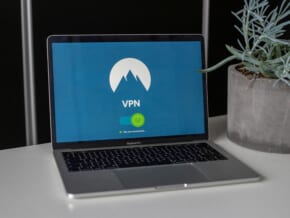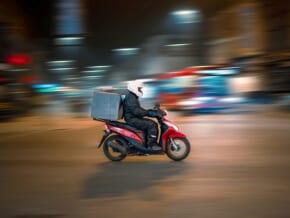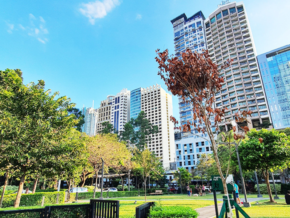A Guide to Motorcycle Laws in the Philippines
Motorcycles have become the most convenient form of personal transport for a lot of people living in the Philippines. It doesn’t matter if you’re an expat or a local: going through traffic is made a lot easier if you have a vehicle with as small of a footprint as a motorcycle.
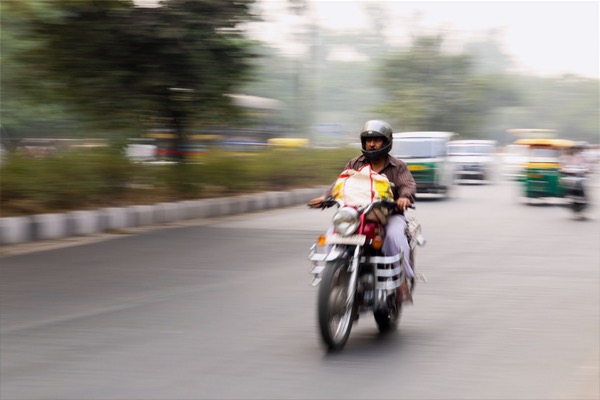
Questions about which laws apply to motorcycles, though, have always lingered on the back of everyone’s mind. The Land Transportation Authority (LTO) has come out with a set of rules and regulations for motorcycle use on highways, which many people seem to miss.
These rules can be found under LTO Administrative Order No. AHS-2008-013. It’s a long read, but here are the most important things you can take away from it:
- All motorcycles and scooters being used on ANY HIGHWAY in the Philippines should be registered with the LTO in accordance with Republic Act (R.A.) No. 4136, or the Land Transportation and Traffic Code.
- If you own a motorcycle and use it, your license plate should be visible and clean so your ride can be identified by everyone.
- Motorcycles follow the same speed limits as cars. In case you’ve forgotten, that’s:
- 80 kph on open country roads with no blind corners
- 40 kph on “through streets” or roads clear of traffic and without blind corners
- 30 kph if there’s light traffic and it’s not a through street
- 20 kph everywhere else
- Passengers, who are often referred to as back-riders, is limited to one. Cargo, on the other hand, is limited to saddlebags or luggage carriers approved by the Department of Trade and Industry (DTI).
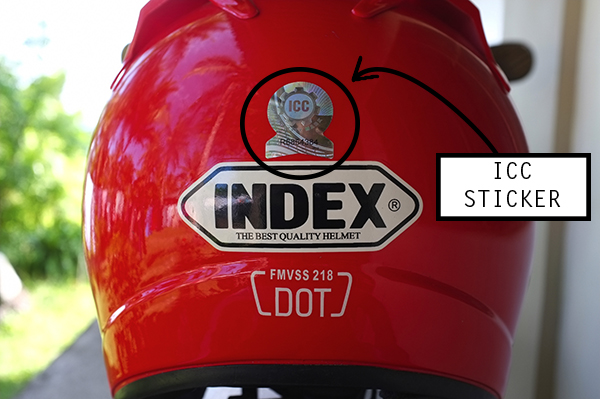
- Both driver and passenger must wear a DTI-approved (i.e. with an ICC sticker) helmet when riding a motorcycle as per R.A. 10054 or the Motorcycle Helmet Act of 2009.
- For accessories, all motorcycles should have headlights, tail lights, signal lights, brake lights, side mirrors, and a horn. The LTO also allows a maximum of two supplementary white or selective yellow LED/high-intensity discharge (HID) lamps with six bulbs each, directed downward and never towards the left side, and should let you see 10 meters ahead.
- Any other accessories have to be approved by the LTO and the DTI.
- DUI is still illegal for motorcycle riders, along with using a mobile phone or similar gadgets.
- Lane splitting is prohibited as per this rule.
- Lane splitting, or lane filtering, is the act of driving in between slow-moving vehicles.
- Closed shoes are the only kind of footwear allowed when riding a motorcycle. This means no slippers, sandals, flip-flops, or even bare feet. Then again, who would want to ride their motorcycle with bare feet?
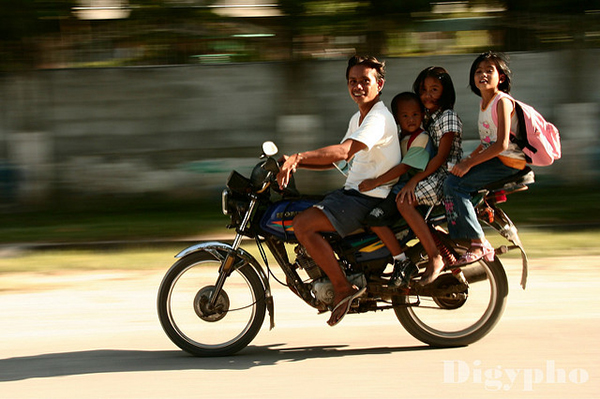 TAKEN BEFORE THE LAW. This was taken in 2008, or before the enactment of the Motorcycle Helmet Act of 2009 and R.A. 10666 or the Children’s Safety on Motorcycles Act of 2015.
TAKEN BEFORE THE LAW. This was taken in 2008, or before the enactment of the Motorcycle Helmet Act of 2009 and R.A. 10666 or the Children’s Safety on Motorcycles Act of 2015.
- According to R.A. 10666 or the Children’s Safety on Motorcycles Act of 2015, children are not allowed to ride a motorcycle on public roads with either heavy traffic volume, has a lot of fast-moving vehicles, or where speeds more than 60 kph are allowed unless:
- The child can comfortably rest his/her feet on the foot peg,
- The child’s arms can reach around and grasp the waist of the driver,
- The child has a helmet, or
- The child is in dire need of medical attention
As you can see, apart from the obvious and the unique (i.e. no lane splitting and shoes only, please), motorcycles are pretty much treated like cars in the Philippines. This means you have to follow whatever road rules and regulations the LTO has for cars. For a list of fines, visit dotr.gov.ph.
Got any concerns about the country’s motorcycle rules and regulations? Hit us up in the comments section below. Hopefully, we can pass that on to the LTO. For complete information on the country’s motorcycle laws, including those on customization and the implementing rules and regulations of the pertinent laws, please visit dotr.gov.ph or send them a message on Facebook (@DOTrPH).
Images grabbed from Paul Lewin on flickr, trevorkloeden.wordpress.com
Source: Motorcycle Development Program Participants Association, Inc., Philippine Daily Inquirer, Official Gazette, The LAWPHiL Project





